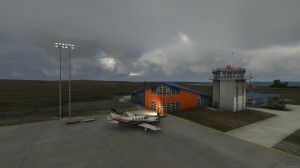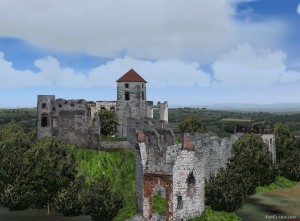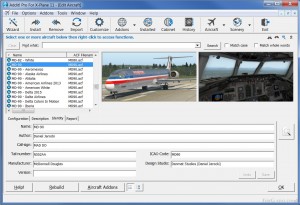Textures Only
CFS Macro White M3 Half-track. CFS Version of a WWII ground vehicle. The M3 Half-track was an armored vehicle developed by White Motor Company, used by the United States, the British Empire and the other Allies during World War II and the Cold War. Nearly 43, 000 were produced, and supplied to the US Army, USAAF and Navy, as well as British Commonwealth and Soviet Red Army forces, serving on all fronts throughout the war. Between the world wars, the US Army sought to improve the tactical mobility of its forces. With the goal of finding a high-mobility infantry vehicle, the Ordnance Department had evaluated the half-track design by testing French Citro n-K gresse vehicles. The White Motor Company produced a prototype halftrack using their own chassis and the body of the M3 Scout Car. The de
Show more... sign, using as many commercial components as possible to improve reliability and rate of production, was standardized in 1940 and built by the Autocar Company, Diamond T Motor Company, and the White Company. Offered with a choice of White 386 cu in (6, 330 cc) 160AX engine, or 450 cu in (7, 400 cc) IHC RED-450-B engine, the M3 was driven through a manual constant-mesh (non-synchromesh) transmission with four forward and one reverse gear, as well as a two-speed transfer case. Front suspension was leaf spring, tracks by vertical volute spring. Braking was vacuum-assisted hydraulic, steering manual, without power assist. The electrical system was 12-volt. The M3 had a longer body than the M2 with a single access door in the rear and seating for a 13-man rifle squad. Ten seats were arranged down either side of the vehicle, with three in the cab. Racks under the seats were used for ammunition and rations; additional racks behind the seat backs held the squads rifles and other stowage. A small rack for mines was added on the outside of the hull just above the tracks. In combat, most units found it necessary to stow additional food, rucksacks and other crew stowage on the outside of the vehicle. Luggage racks were often added in the field, and very late vehicles had rear-mounted racks for this crew stowage. Early vehicles had a pintle mount just behind the front seats mounting a. 50-caliber (12. 7 mm) M2 Browning machine gun. The later M3A1 adopted a raised, armored pulpit mount for the. 50-caliber, and. 30-caliber (7. 62 mm) machine guns could be used from mounts along the sides of the passenger compartment. Many M3s were later modified to the M3A1 standard. The body was armored all around, with an adjustable armored shutter for the engines radiator and a bulletproof windscreen. During WWII, some versions were developed for carry additional armament, as anti-aircraft machine guns, 75 or 105 mm howitzers, or 81 mm mortar. The halftracks were initially extremely unpopular and dubbed Purple Heart Boxes (a grim reference to the US Armys decoration for combat wounds) by American troops. Chief complaints centered around the complete lack of overhead protection from airbursting artillery shells and that the armor was inadequate against machine gun fire. Total production of the M3 ran to nearly 41, 000 vehicles. To supply the Allied nations, International Harvester produced several thousand of a very similar vehicle, the M5 half track for Lend-Lease. (Source. Wikipedia on-line) I have created a api macro with Easy Object Designer (EOD), Version 2. 0. 47 (Matthias Br ckner), to generate a static M3 Half-track, used by USAAF Ground Services on WWII. Some textures are based on pictures availables on WWII Drawings site, mastered by Vincent Bourgui on, Rochefort (Belgium) and www. o5m6. de, Engines of the Red Army site. This macro was tested only in CFS1 sceneries, but I believe that can work without problems in CFS2-3 and FS2000-2002. All mine API macros, could be included on objects libraries with crash detection (for CFS missions), but must be distributed with the original API-MACRO copyright. Edmundo Abad Santiago-Chile August 2012
Show less...







